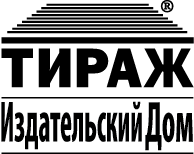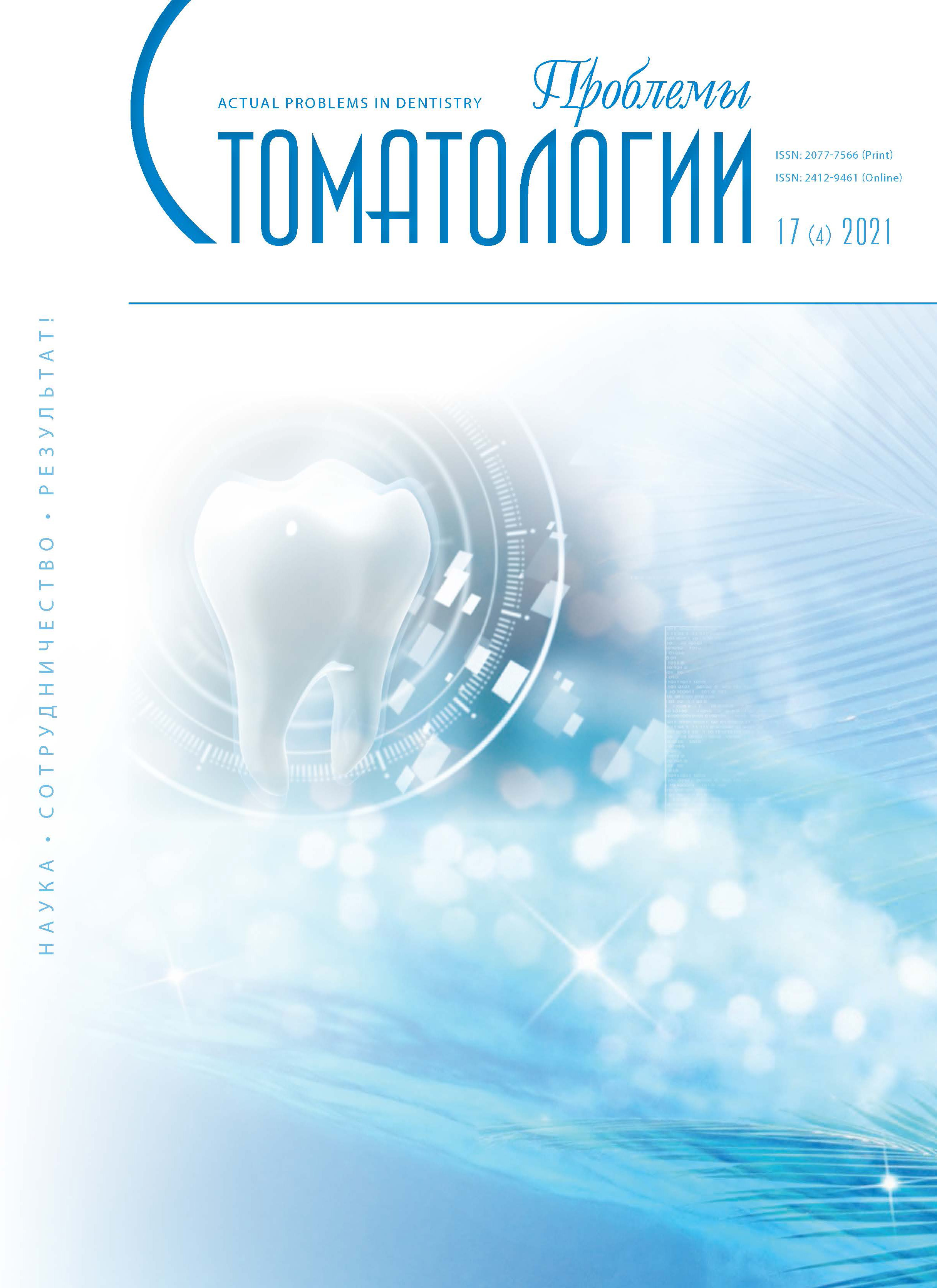Москва, г. Москва и Московская область, Россия
Россия
Москва, г. Москва и Московская область, Россия
УДК 61631 Стоматология
ГРНТИ 76.29 Клиническая медицина
Предмет. Дизайн соединения имплантата с супраструктурой является одним из ключевых факторов, влияющих на успех ортопедического лечения с опорой на имплантаты. Различные типы соединения имеют свои биологические и механические особенности, от знания которых напрямую зависит успех реабилитации пациента. Имплантаты на постоянной основе подвергаются циклическому воздействию жевательной нагрузки, которая распространяется через ортопедическую конструкцию на внутреннее соединение, включающее сам имплантат, супраструктуру и фиксирующий винт. Фиксирующий винт является самым слабым звеном во внутреннем соединении имплантационной системы. Четкое понимание биомеханики имплантационной системы позволяет оптимизировать индивидуальное планирование лечения и снизить риск возникновения осложнений. Цель. Проведение анализа и поиск закономерностей возникновения биомеханических осложнений в различных типах соединений между имплантатом, винтом и супраструктурой. Методология. Проведен литературный анализ по оценке состояния фиксирующего винта имплантата в различных типах соединений «имплантат — супраструктура». Для создания статьи были проанализированы более 90 отечественных и зарубежных источников на электронных ресурсах PubMed, Medline, Cochrane, Elibrary, Cyberleninka по ключевым словам. Результаты. В обзоре литературы описаны современные представления о причинах биомеханических осложнений, возникающих в узлах соединения «дентальный имплантат — супраструктура — фиксирующий винт». Выводы. Проведенный нами анализ позволяет сделать выводы о том, что закономерности возникновения биомеханических осложнений в различных типах соединения между имплантатом, винтом и супраструктурой активно изучаются, однако влияние именно типа соединения на фиксирующий винт неоднозначно и требует дополнительного изучения.
соединение имплантата и абатмента, абатмент, фиксирующий винт, винт абатмента, винт имплантата, implant abutment connection, implant abutment junction, fixation screw, abutment screw, implant screw
1. Alonso-Pérez R., Bartolomé J.F., Ferreiroa A. et al. Original vs. nonoriginal abutments for screw-retained single implant crowns: an in vitro evaluation of internal fit, mechanical behaviour and screw loosening // Clin Oral Implants Res. - 2018;29:1230. doi:https://doi.org/10.1111/clr.13390.
2. Amanda Robau Porruaa, Yoan Pérez Rodríguezb, Laura M. Soris Rodrígueza, Osmel Pérez Acostab, Jesús E. Gonzálezc The effect of diameter, length and elasticmodulus of a dental implant on stress and strain levels in peri-implant bone: a 3D finite element analysis // Bio-Medical - Materials and Engineering. - 2020. DOI:https://doi.org/10.3233/bme-191073
3. Balik A., Karatas M.O., Keskin H. Effects of different abutment connection designs on the stress distribution around five different implants: a 3-dimensional finite element analysis // J Oral Implantol. - 2012;38:491-496. doi:https://doi.org/10.1563/AAID-JOI-D-10-00127.
4. Chae S.W., Kim Y.S., Lee Y.M. et al. Complication incidence of two implant systems up to six years: a comparison between internal and external connection implants // J Periodontal Implant Sci. - 2015;45:23-29. doi:https://doi.org/10.5051/jpis.2015.45.1.23.
5. Coppedê A.R., Bersani E., de Mattos Mda G. et al. Fracture resistance of the implant-abutment connection in implants with internal hex and internal conical connections under oblique compressive loading: an in vitro study // Int J Prosthodont. - 2009;22:283-286. PMID:19548411
6. Coppedê A.R., de Mattos Mda G., Rodrigues R.C., Ribeiro R.F. Effect of repeated torque/mechanical loading cycles on two different abutment types in implants with internal tapered connections: an in vitro study // Clin Oral Implants Res. - 2009;20:624-632. doi:https://doi.org/10.1111/j.1600-0501.2008.01690.x.
7. Coppedê A.R., Faria A.C., de Mattos Mda G. et al. Mechanical comparison of experimental conical-head abutment screws with conventional flat-head abutment screws for external-hex and internal tri-channel implant connections: an in vitro evaluation of loosening torque // Int J Oral Maxillofac Implants. - 2013;28:e321-e329. doi:https://doi.org/10.11607/jomi.3029.
8. Freitas-Junior A.C., Almeida E.O., Bonfante E.A. et al. Reliability and failure modes of internal conical dental implant connections // Clin Oral Implants Res. - 2012;24:197-202. doi:https://doi.org/10.1111/j.1600-0501.2012.02443.x.
9. Geng J., Yan W., Xu W. Application of the Finite Element Method in Implant Dentistry // Zheijang university press. - 2008:148. doi:https://doi.org/10.4103/JPBS.JPBS_296_18
10. Goiato M.C., Shibayama R., Gennari Filho H. et al. Stress distribution in implant-supported prostheses using different connection systems and cantilever lengths: digital photoelasticity // J Med Eng Technol. - 2016;40:35-42. doi:https://doi.org/10.3109/03091902.2015.1127440.
11. Gracis S., Michalakis K., Vigolo P. et al. Internal vs. external connections for abutments/reconstructions: a systematic review // Clin Oral Implants Res. - 2012;23:202-216. doi:https://doi.org/10.1111/j.1600-0501.2012.02556.x.
12. Hotinski E., Dudley J. Jan Abutment screw loosening in angulation-correcting implants: An in vitro study // Prosthet Dent. - 2019. doi:https://doi.org/10.1016/j.prosdent.2018.03.005.
13. Huang Y., Wang J.J. Mechanism of and factors associated with the loosening of the implant abutment screw: A review // Esthet Restor Dent. - 2019;31(4):338-345. doi:https://doi.org/10.1111/jerd.12494. Epub 2019 May 31. PMID:31150572
14. Sousa R.M., Simamoto-Junior P.C., Fernandes-Neto A.J., Sloten J.V., Jaecques S.V., Pessoa R.S. Influence of Connection Types and Implant Number on the Biomechanical Behavior of Mandibular Full-Arch Rehabilitation // Int J Oral Maxillofac Implants. - 2016;31(4):750-760. doi:https://doi.org/10.11607/jomi.4785.
15. Jo J.Y., Yang D.S., Huh J.B. et al. Influence of abutment materials on the implant-abutment joint stability in internal conical connection type implant systems // J Adv Prosthodont. - 2014;6:491-497. doi:https://doi.org/10.4047/jap.2014.6.6.491
16. Kim S.K., Koak J.Y., Heo S.J. et al. Screw loosening with interchangeable abutments in internally connected implants after cyclic loading // Int J Oral Maxillofac Implants. - 2012;27:42-47. PMID:22299077
17. Kitagawa T., Tanimoto Y., Odaki M. et al. Influence of implant/abutment joint designs on abutment screw loosening in a dental implant system // J Biomed Mater Res B Appl Biomater. - 2005;75:457-463. doi:https://doi.org/10.1002/jbm.b.30328.
18. Krishna Chaitanya Kanneganti, Dileep Nag Vinnakota, Srinivas Rao Pottem, Mahesh Pulagam Comparative effect of implant-abutment connections, abutment angulations, and screw lengths on preloaded abutment screw using three-dimensional finite element analysis: An in vitro study // The Journal of Indian Prosthodontic Society. - 2018:161. doi:https://doi.org/10.4103/jips.jips_219_17.
19. Lang L.A., Wang R.F., May K.B. The influence of abutment screw tightening on screw joint configuration // J Prosthet Dent. - 2002. doi:https://doi.org/10.1067/mpr.2002.121488.
20. Meijer H.J.S., Kuiper J.H., Starmans F.J.M., Bosman F. Stress Distribution around Dental Implants: Influence of Superstructure, Length of Implants and Height of Mandible // J. Prosthet. Dent. - 1992;68(1):96-102. doi:https://doi.org/10.1016/0022-3913(92)90293-j.
21. Michalakis K.X., Calvani P.L., Muftu S. et al. The effect of different implant-abutment connections on screw joint stability // J Oral Implantol. - 2014;40:146-152. DOI:https://doi.org/10.1563/aaid-joi-d-11-00032
22. Misch C.E. Dental implant prosthetics: Elsevier Health Sciences. 2014. ISBN: 9780323112918
23. Muley N., Prithviraj D., Gupta V. Evolution of external and internal implant to abutment connection // Int J Oral Implantol Clin Res. - 2012;3(3):122-129. DOIhttps://doi.org/10.5005/JP-JOURNALS-10012-1079
24. Park J.M., Baek C.H., Heo S.J. et al. An in vitro evaluation of the loosening of different interchangeable abutments in internal-connectiontype implants // Int J Oral Maxillofac Implants. doi:https://doi.org/10.11607/jomi.5295.
25. Pessoa R.S., Muraru L., Junior E.M., Vaz L.G., Sloten J.V., Duyck J. et al. Influence of implant connection type on the biomechanical environment of immediately placed implants - CT-based nonlinear, three-dimensional finite element analysis // Clin Implant Dent Relat Res. - 2010;12:219-234. doi:https://doi.org/10.1111/j.1708-8208.2009.00155.x.
26. Qian J., Wennerberg A., Albrektsson T. Reasons for marginal bone loss around oral implants // Clin Implant Dent Relat Res. - 2012;14:792-807. doi:https://doi.org/10.1111/cid.12014.
27. Rack A., Rack T., Stiller M., Riesemeier H., Zablcr S., Nelson K. In vitro synchrotron-based radiography of micro-gap formation at the implant-abutment interface of two-piece dental implants // J Synchrotron Radiat. - 2010;17:289-294. doi:https://doi.org/10.1107/S0909049510001834
28. Renouard F., Rangert B. Risk factors in implant dentistry. Quintessence Publishing Co, Inc. 2004:182. 978-2-912550-56-9, 9782912550569
29. Ricomini Filho A.P., Fernandes F.S., Straioto F.G., da Silva W.J., Del Bel Cury A.A. Preload loss and bacterial penetration on different implant-abutment connection systems // Braz Dent J. - 2010;21:123-129. doi:https://doi.org/10.1590/s0103-64402010000200006.
30. Sadid-Zadeh R., Kutkut A., Kim H. Prosthetic Failure in Implant Dentistry // Dent. Clin. North Am. - 2015;59:195-214. doi:https://doi.org/10.1016/j.cden.2014.08.008.
31. Sailer I., Mühlemann S., Zwahlen M. et al. Cemented and screw retained implant reconstructions: a systematic review of the survival and complication rates // Clin Oral Implants Res. - 2012;23:163-201. doi:https://doi.org/10.1111/j.1600-0501.2012.02538.x.
32. Sakamoto K., Homma S., Takanashi T. et al. Influence of eccentric cyclic loading on implant components: comparison between external joint system and internal joint system // Dent Mater J. - 2016;35:929-937. doi:https://doi.org/10.4012/dmj.2020-030
33. Siadat H., Beyabanaki E., Mousavi N., Alikhasi M. Comparison of fit accuracy and torque maintenance of zirconia and titanium abutments for internal tri-channel and external-hex implant connections // J Adv Prosthodont. - 2017;9:271-277. DOIhttps://doi.org/10.4047/jap.2017.9.4.271
34. Wolfart S., Harder S., Reich S., Sailer I., Weber V. Implant prosthodontics a patient-oriented concept. 2016. ISBN: 978-1-85097-282-2; 9781850972822
35. Vetromilla B.M., Brondani L.P., Pereira-Cenci T., Bergoli C.D. Influence of different implant-abutment connection designs on the mechanical and biological behavior of single-tooth implants in the maxillary esthetic zone: a systematic review // J Prosthet Dent. - 2019;121:398-403. doi:https://doi.org/10.1016/j.prosdent.2018.05.007.
36. Vigolo P., Gracis S., Carboncini F., Mutinelli S. AIOP (Italian Academy of Prosthetic Dentistry) clinical research group internal- vs external connection single implants: a retrospective study in an Italian population treated by certified prosthodontists // Int J Oral Maxillofac Implants. - 2016;31:1385-1396. doi:https://doi.org/10.11607/jomi.4618.
37. Wang J.H., Judge R., Bailey D. A 5-year retrospective assay of implant treatments and complications in private practice: the restorative complications of single and short-span implant-supported fixed prostheses // Int J Prosthodont. - 2016;29:435-444. doi:https://doi.org/10.11607/ijp.4794.
38. Yamanishi Y., Yamaguchi S., Inuzato S., Naksno T., Yatam H. Influences ol implant neck design and implant-abutment joint type on peri-implant bone stress and abutment micromovement: three-demensional finite element analysis // Dent Mater. - 2012;28:1126-1133. doi:https://doi.org/10.1016/j.dental.2012.07.160
39. Yao K.T., Kao H.C., Cheng C.K. et al. The potential risk of conical implant-abutment connections: the antirotational ability of Cowell implant system // Clin Implant Dent Relat Res. - 2015;17:1208-1216. DOI:https://doi.org/10.1111/cid.12219
40. York R. Characterization of Micro-Machining of Dental Screws and Abutments : Diss. Ottawa. Canada, 2017:9-19,79-80. DOIhttps://doi.org/10.20381/RUOR-20349
41. Zeno H.A., Buitrago R.L., Sternberger S.S. et al. The effect of tissue entrapment on screw loosening at the implant/abutment interface of external- and internal-connection implants: an in vitro study // J Prosthodont. - 2016;25:216-223. DOI:https://doi.org/10.1111/jopr.12329
42. Воронин В.Ф., Солодкий В.Г., Солодкая Д.В., Мураев А.А. Профилактика и устранение осложнений, связанных с выкручиванием и переломами центральных винтов в имплантатах. Российский стоматологический журнал. 2013;3:22-26. [V.F. Voronin, V.G. Solodkiy, D.V. Solodkaya, A.A. Muraev. Prevention and elimination of complications associated with unscrewing and fractures of central screws in implants. Russian dental journal. 2013;3:22-26. (In Russ.)]. https://elibrary.ru/item.asp?id=19422986
43. Никитин С.Г., Первов Ю.Ю., Салеев Р.А., Амхадова М.А. Влияние физико-химических факторов, возникающих в элементах имплантационных систем, на центральные винты головок при реабилитации пациентов в клинике ортопедической стоматологии. Медицинский алфавит. Серия «Стоматология». 2019;4;34(409):35-39. [S.G. Nikitin, Yu.Yu. Pervov, R.A. Saleev, M.A. Amkhadova. The influence of physicochemical factors arising in the elements of implantation systems on the central head screws during the rehabilitation of patients in the clinic of orthopedic dentistry. Medical alphabet. Series "Dentistry". 2019;4;34(409):35-39. (In Russ.)]. https://doi.org/10.33667/2078-5631-2019-4-34(409)-35-39
44. Полякова В.В. Бочаров А.В. Применение дентальных имплантатов системы «Anthogyr» для восстановления дефектов зубных рядов. Вестник Смоленской медицинской академии. 2010;9(2):105-107. [V.V. Polyakova, A.V. Bocharov. The use of dental implants of the "Anthogyr" system for the restoration of defects in the dentition. Bulletin of the Smolensk Medical Academy. 2010;9(2):105-107. (In Russ.)]. https://elibrary.ru/item.asp?id=17051348
45. Рожнова О.М., Павлов В.В., Садовой М.А. Биологическая совместимость медицинских изделий на основе металлов, причины формирования патологической реактивности (обзор иностранной литературы). Бюллетень сибирской медицины. 2015;14;4:110-118. [O.M. Rozhnova, V.V. Pavlov, M.A. Sadovoy. Biological compatibility of medical devices based on metals, the reasons for the formation of pathological reactivity (review of foreign literature). Bulletin of Siberian Medicine. 2015;14;4:110-118. (In Russ.)]. https://doi.org/10.20538/1682-0363-2015-4-110-118
46. Freitas da Silva E.V., Dos Santos D.M., Sonego M.V. et al. Does the presence of a cantilever influence the survival and success of partial implant-supported dental prostheses? Systematic review and metaanalysis // Int J Oral Maxillofac Implants. - 2018. DOIhttps://doi.org/10.11607/jomi.6413
47. Zembic A., Kim S., Zwahlen M., Kelly J.R. Systematic review of the survival rate and incidence of biologic, technical, and esthetic complications of single implant abutments supporting fixed prostheses // Int J Oral Maxillofac Implants. - 2014;29:99-116. DOIhttps://doi.org/10.11607/jomi.2014suppl.g2.2
48. Jung R.E., Zembic A., Pjetursson B.E., Zwahlen M., Thoma D.S. Systematic review of the survival rate and the incidence of biological, technical, and esthetic complications of single crowns on implants reported in longitudinal studies with a mean follow-up of 5 years // Clin Oral Implants Res. - 2012;23:2-21. DOIhttps://doi.org/10.1111/j.1600-0501.2012.02547.x
49. Pjetursson B.E., Thoma D., Jung R. et al. A systematic review of the survival and complication rates of implant-supported fixed dental prostheses (FDPs) after a mean observation period of at least 5 years // Clin Oral Implants Res. - 2012;23:22-38. DOIhttps://doi.org/10.1111/j.1600-0501.2012.02546.x




















